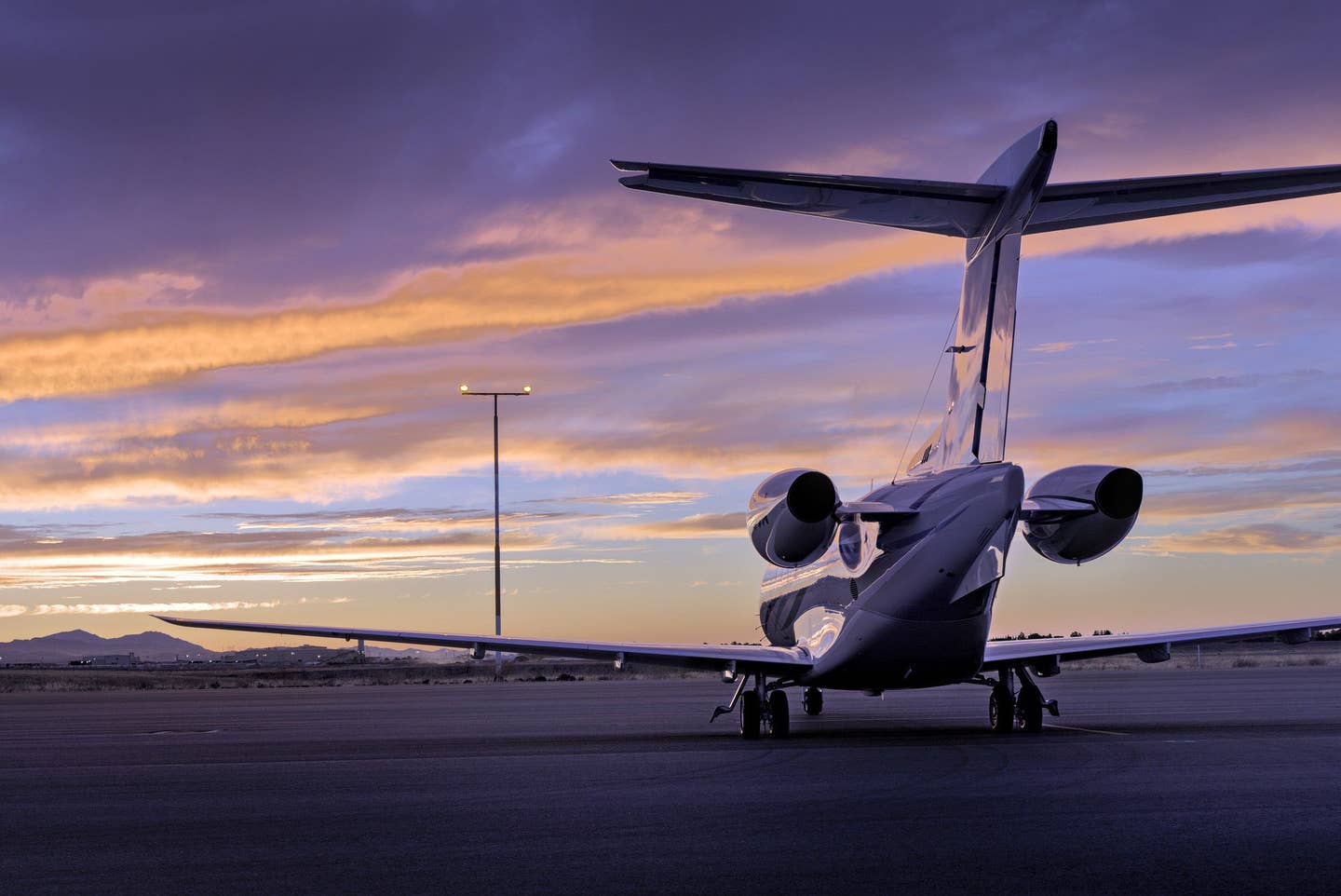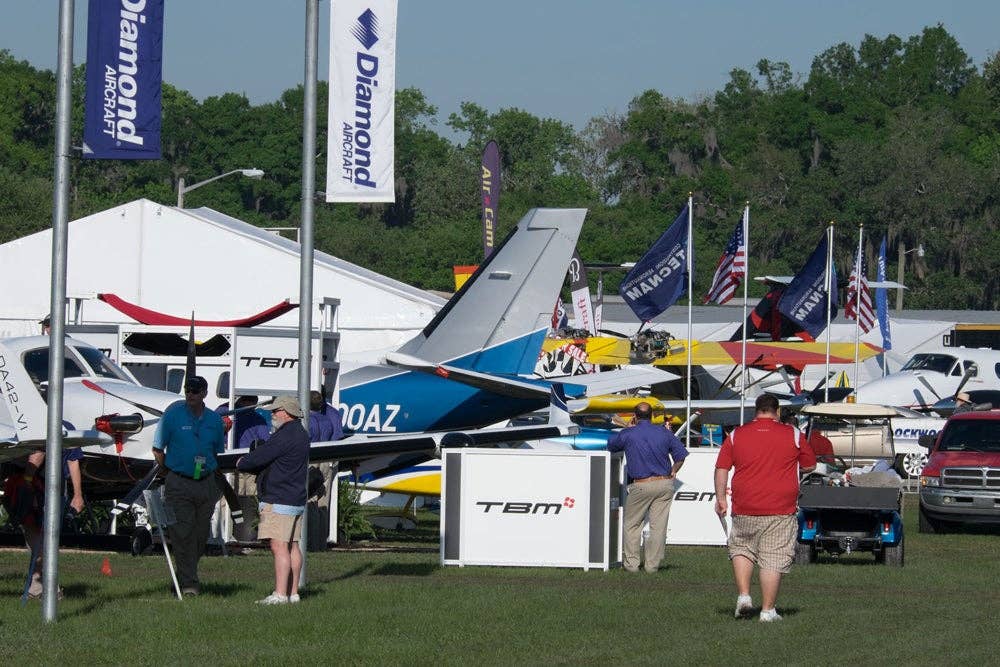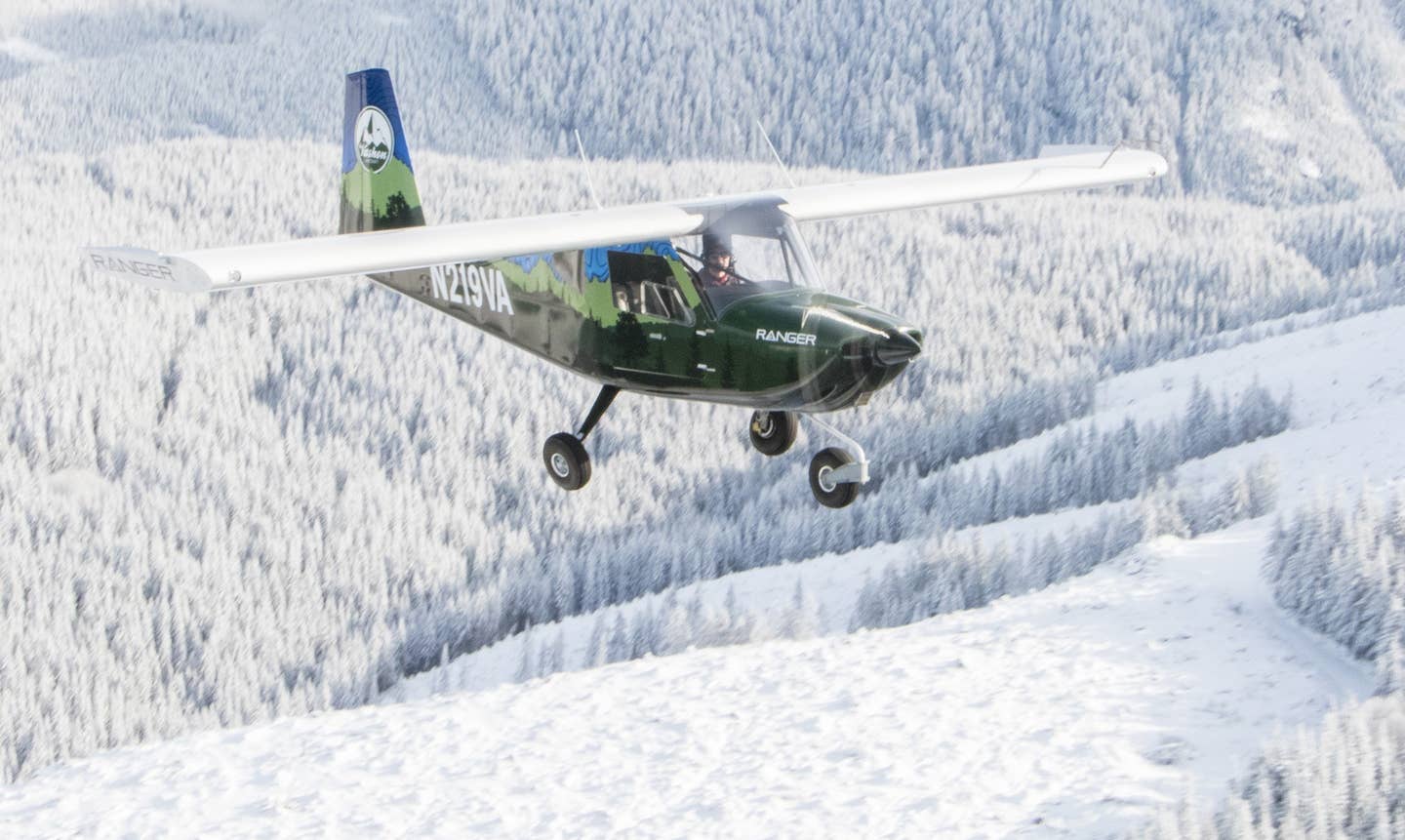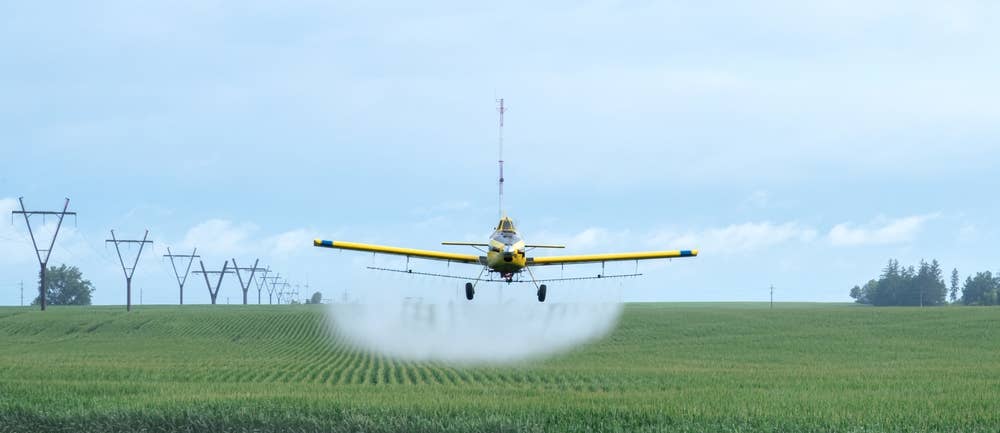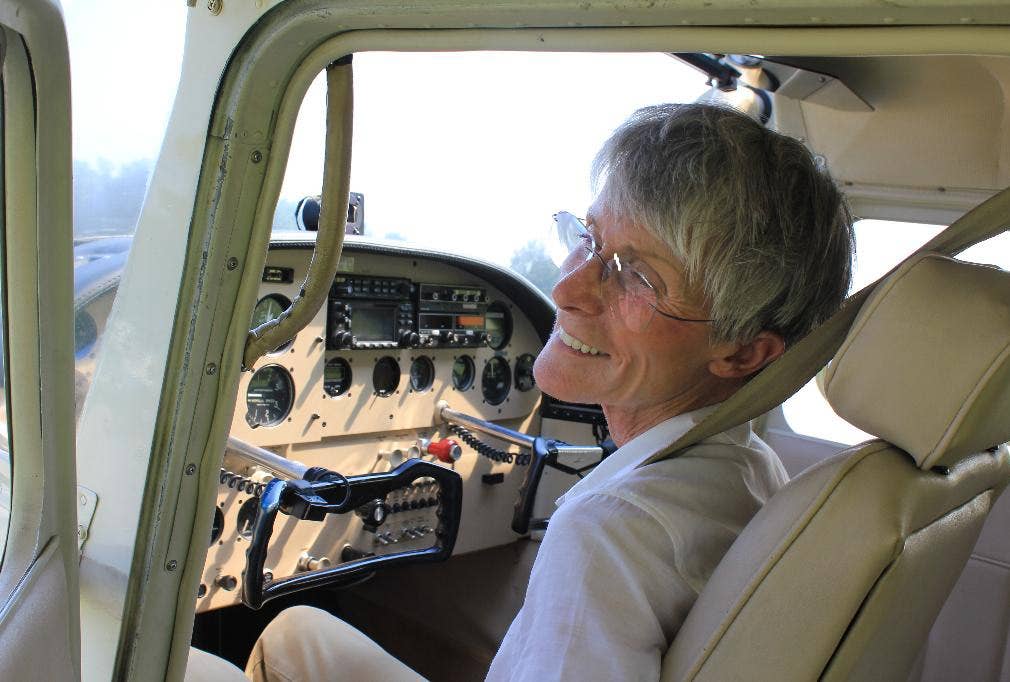
It was a Saturday in June, in the middle of the afternoon, a clear day, in open country-a most perilous time and place. Three sport airplanes-a Pitts S-1, an Acro Sport and an RV-6-were on their way from an airshow at the Longmont Airport, on the north side of Denver, to Centennial Airport at Englewood, on the south side. Longmont and Centennial are only 30 nm apart as the crow flies, but the crow doesn't know about Class B airspace. Denver International lies between the two airports, and so to get from one to the other requires a knight's move to the west around the Denver TCA. Several complications dot this route; the first is the Boulder Airport, an uncontrolled field with considerable soaring activity, located about eight nautical miles south of Longmont.
The three airplanes left Longmont at about 2:45. The two biplanes flew together in echelon formation, while the RV-6, a two-seat tandem low-wing homebuilt occupied by its owner-builder and a passenger, trailed a little distance behind them. At about the same time a Burkhart Grob G103C Twin III Acro was airborne, in spite of being encumbered with the longest name ever given an airplane, near Boulder. The Grob is a two-seat tandem sailplane with a 60-foot wingspan.
The passenger in the Grob felt airsick, and the airplane was returning to land at Boulder. Runway 8 was active. They were approaching the airport from the south at 6,100 feet msl, about 800 feet above the surface, when the pilot, who was in the rear seat, observed a two-plane formation passing in the opposite direction off his right wing. He wondered why they were crossing the airport at pattern altitude. A moment later his passenger yelled that an airplane was directly in front of them. It was the RV-6.
The pilot raked the Grob over into a steep left bank, at the same time deploying the airbrakes. The right wingtip of the sailplane struck the propeller, lower cowling and right main wheel of the RV-6. Eighteen inches of the Grob's wing was sheared off, and the RV lost one propeller blade and its lower cowling.
The Grob, which was relatively lightly damaged, continued its left turn onto the downwind leg and landed safely on the glider runway, which is parallel to, and just to the north of, the one for powered aircraft. The RV turned sharply to the right and flew northwestward. Its pilot made a distress call on the unicom frequency. He then banked steeply to the left. According to witnesses, the airplane appeared to stall. It rolled inverted and crashed into a lake near the runway threshold.
The RV was quickly pulled ashore, but both occupants were already dead. The coroner attributed the pilot's death to internal injuries but the passenger's to drowning. The mag switches were off, suggesting an effort to shut down an engine vibrating violently from an out-of-balance propeller; on the other hand, the throttle control was full forward and the mixture control was full rich. The master switch was on, and something, probably a gyro, continued whirring until fire department personnel disconnected the battery. The airplane was in one piece, and control system continuity was unbroken. The National Transportation Safety Board concluded that the RV was still flyable after the collision, and that the crash was due to an "inadvertent airplane stall...while maneuvering for an emergency landing."
As for the collision itself, the NTSB blamed it on "poor judgment by the pilot of the RV-6...in that he traversed an uncontrolled airport at traffic pattern altitude" and to the boilerplate "failure of both pilots to see and avoid each other." Finally, it cited the "inadvertent stall encountered by the pilot of the RV-6 while maneuvering for an emergency landing."
The pilot has the final authority for the conduct of his flight, and in exchange he takes the blame for whatever goes wrong. In this case the RV pilot was following two other airplanes and so, had he survived to defend his actions, he might have argued that he did not exactly decide on his own to fly over the Boulder airport at pattern altitude. It's important to note, however, that the NTSB comments only on the pilot's judgment. There was no violation involved, since the airspace is uncontrolled. But there was a risk, especially on a summer Saturday afternoon when the Boulder airport would be particularly busy.
Mentioning "poor judgment" in the same breath with both pilots' "failure to see and avoid" may seem to imply some fault on the part of the pilot of the sailplane. Actually, no such implication is intended. "Probable causes" do not always involve fault, and in this case the NTSB merely intends to note, as a factual matter, that the pilots failed to see one another in time.
Just why they did not see one another is one of the more interesting aspects of this accident. Both the RV-6 and the Grob are very clean airplanes that present a small cross-section when viewed head-on. Airplanes that are on a collision course do not move in each other's fields of view and so are harder for the eye to detect than objects that move relative to the background. Finally, a clear day actually makes detecting traffic not easier, as you might expect, but more difficult: when there is some mist or haze, nearby objects stand out more clearly than distant ones, but in very clear air all objects, distant and near, make equal claims on the eye's attention.
The seating arrangement in the Grob is also noteworthy. The pilot-presumably the more experienced traffic-spotter-may sit behind the passenger. Obviously his view of traffic directly ahead is impaired. This situation is not unique to the Grob; it is true of almost every tandem airplane used for instruction except modern military trainers, in which the rear seat is elevated to allow the instructor pilot to see over the head of his student.
One of the cruel ironies of this collision was that because of the great size of the Grob, the pilot's evasive action, quick as it was, failed to prevent a grazing contact. A diving turn away from the traffic is the natural and correct response to an imminent conflict suddenly perceived. In this case, however, the huge wingspan of the sailplane defeated the pilot's intention.
Nevertheless, it appears from the NTSB report that the RV-6 was still controllable after the collision. The pilot turned toward the Boulder pattern. The runway is oriented east-west with the traffic pattern on the north side. The sailplane pattern lies inside the power plane pattern, with a standard entry from the south crossing the runway at midfield. Because the pilot of the RV-6 flew northwestward after the collision, he crossed the runway and then had to make a turn of quite a bit more than 180 degrees in order to land. (The surrounding terrain in all directions offers few inviting prospects for an off-airport landing.)
At some point the RV-6 pilot apparently shut down his engine, which would have been vibrating violently, by switching off the magnetos. After crossing the runway he began a steeply banked left turn, presumably in hope that he could still make the threshold of Runway 8. At some point he lowered the flaps 20 degrees, perhaps to help tighten the turn. But the airplane stalled and rolled over, crashing in the lake that lies just west of the runway.
Considering that one standard phrase used by the NTSB to describe stall-spin accidents is "pilot failed to maintain flying speed," the one used here-"inadvertent airplane stall encountered by the pilot"-seems designed to put as little blame as possible on the pilot and as much as possible on uncontrollable outside circumstances. It's difficult to know how much importance to attach to turns of phrase in government publications, which are not noted for their subtlety and delicate nuance, but the investigator may have felt that, considering that the pilot was trying to execute a difficult dead-stick landing after a midair collision at low altitude, loss of control was a likely eventuality.
It is not clear from the accident report whether the Grob had a radio and whether the other three aircraft were announcing their position on unicom, though it is likely that the pilot of the RV-6 was at least monitoring the frequency. Nor do we learn whether the pilots of the two biplanes saw the Grob. Apparently the Grob pilot was not aware of the other airplanes until he saw them, and seeing the two biplanes in close formation may actually have arrested his attention for a moment and prevented his seeing the RV-6 sooner. Similarly, the airplanes in a formation, excepting the lead, are obliged to keep an eye on one another, and are not free to scan the sky as continuously as a single pilot is expected to do. Four sets of eyes in three airplanes are not necessarily better than one.
This article is based solely on the National Transportation Safety Board's report of the accident and is intended to bring the issues raised to the attention of our readers. It is not intended to judge or to reach any definitive conclusions about the ability or capacity of any person, living or dead, or any aircraft or accessory.

Sign-up for newsletters & special offers!
Get the latest FLYING stories & special offers delivered directly to your inbox

